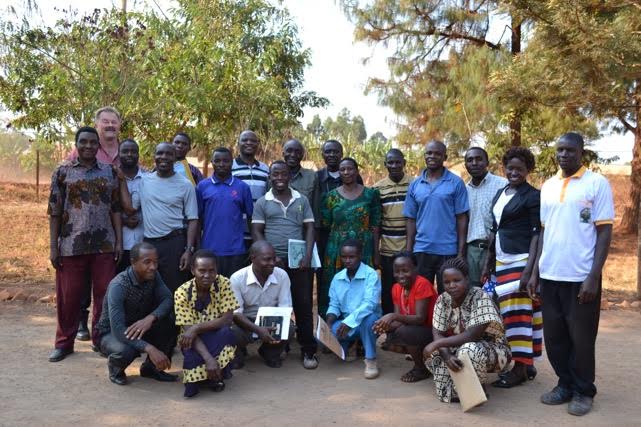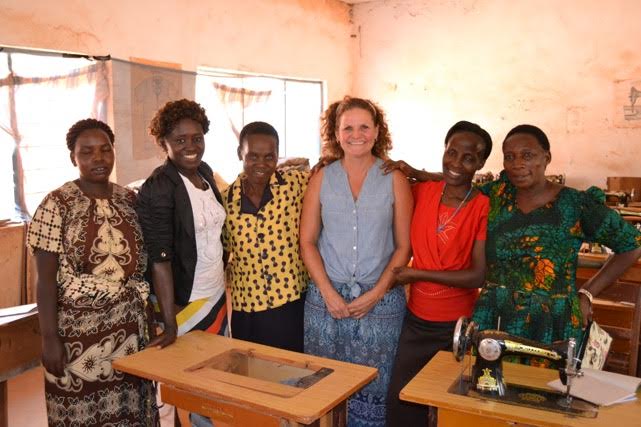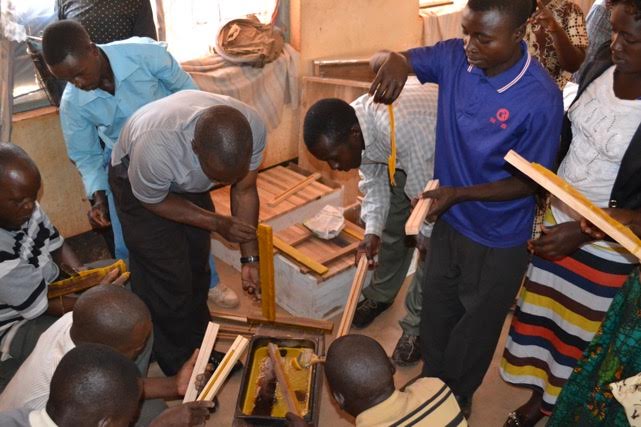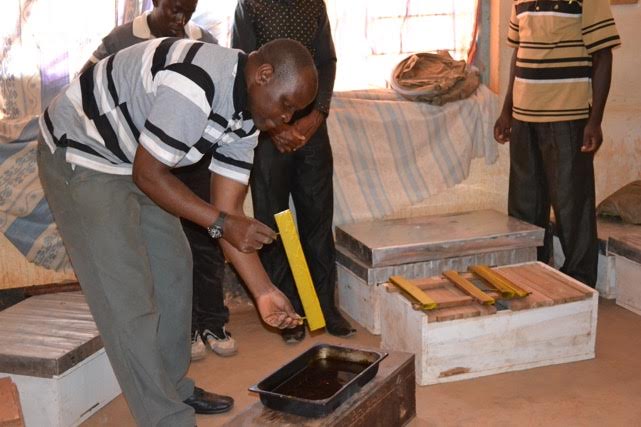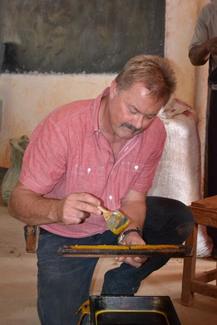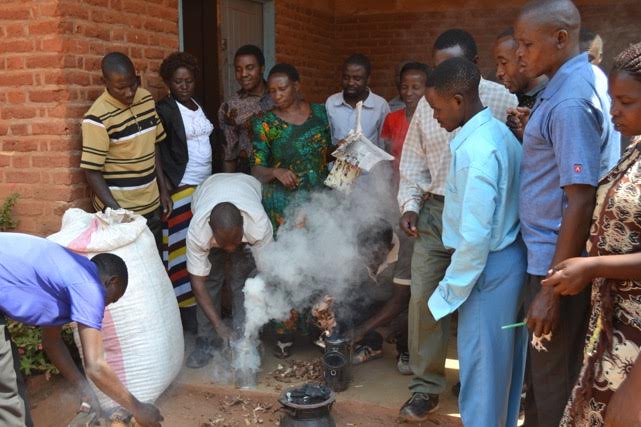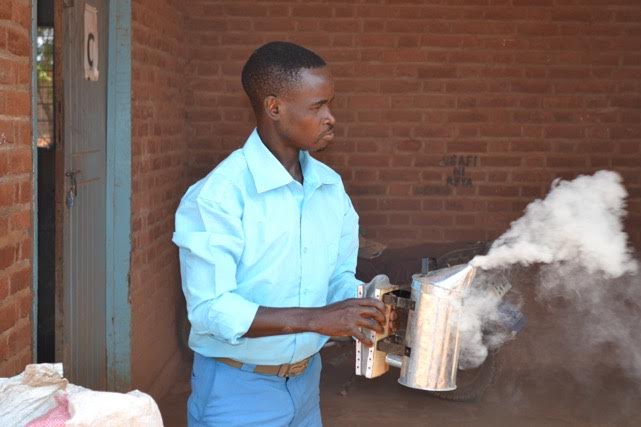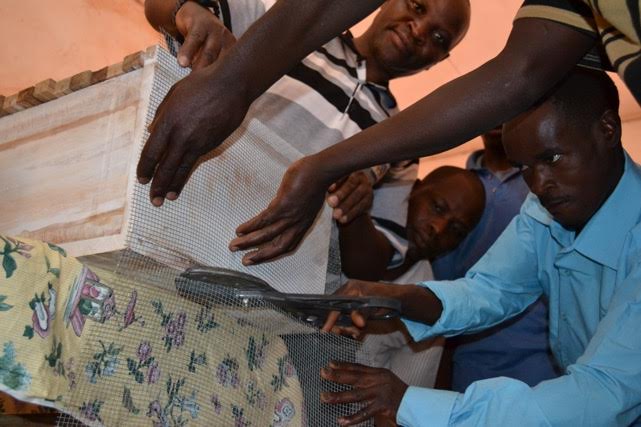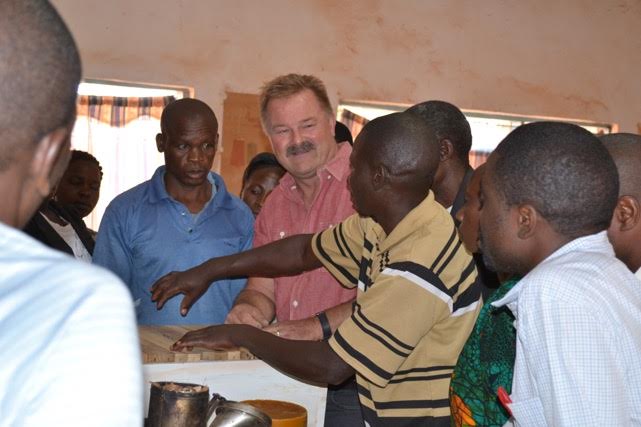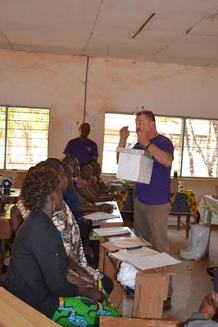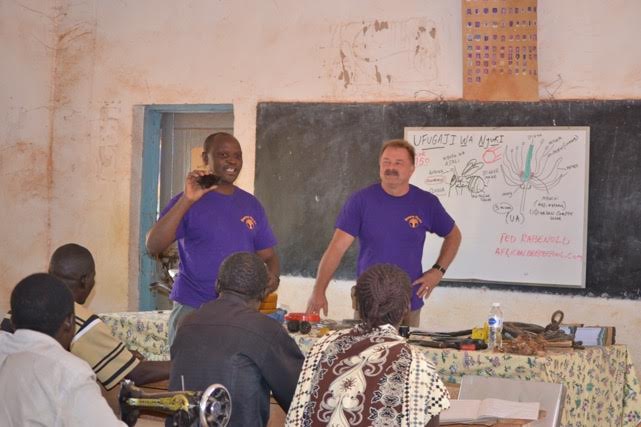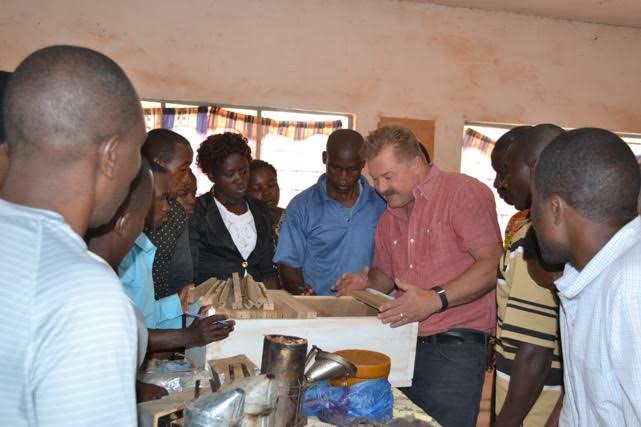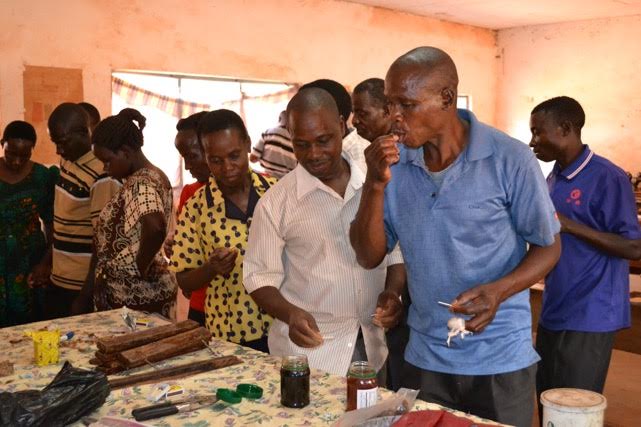Training at Kasulu Technical School
|
What a great time we had working with Father Esperius Hamenyande and his beekeeper trainees at Kasulu Technical School in Kasulu town, Kigoma Region. Kasulu is near the border of Burundi. Over twenty people came from different regions in Tanzania to the course focusing on Theory and Practical aspects of African beekeeping. It took two days of hard driving to get to Kasulu but was very interesting as we had never been to that region of Tanzania. Most of the beekeeper trainees were from the Waha people group and were very proud of the beekeeping traditions in that area. |
The trainees had lots of good questions but were most concerned about how to get 100 percent occupancy in the beehives located in their apiaries. It is very demoralizing for a Tanzanian beekeeper to invest in hives and have a poor occupation rate. In Africa active beehives are best obtained through attracting swarms. During swarm season swarms of African bees tend to literally fly all different directions in their quest for a suitable location to occupy, draw out their comb and build up their numbers.
An apiary that is located in a small cove in the forest is unlikely to get more than 2 to 4 occupations where it sits. The use of small 5-bar beehives, called catcher boxes, helps in the occupation process. (These small hives need to have bars that match the hives in your apiary. They should also be well built so that the bees cannot crawl out when they are being transported.) Hang these small catcher boxes throughout the forest and they will have a greater chance of attracting swarming bees than 10 beehives located in one spot.
Once the bees move into the catcher boxes you need to transfer them from where they are hanging to your apiary. Gently smoke the bees in your catcher boxes and move all 5 bars of the bees in one motion from your catcher box to your full size hive. You can move them all at once by using pressure from the palms of your hands to hold the bars together as if they were one. Take out 10 bars of your full size hive so that you have plenty of room to slowly lower them into their new home. Then shake the rest of the bees out of the catcher box into into the new hive before putting all bars back on your full size hive.
Due to the generosity of Clare Liptak, a friend of the Tanzanian Catholic Diocese from New Jersey, USA, we took 10 beehives and 12 beekeeper suits as well as other beekeeping materials including bolts of light canvas for making more suits, heavy duty zippers, and elastic.
Hope that you enjoy the pictures of the training:
An apiary that is located in a small cove in the forest is unlikely to get more than 2 to 4 occupations where it sits. The use of small 5-bar beehives, called catcher boxes, helps in the occupation process. (These small hives need to have bars that match the hives in your apiary. They should also be well built so that the bees cannot crawl out when they are being transported.) Hang these small catcher boxes throughout the forest and they will have a greater chance of attracting swarming bees than 10 beehives located in one spot.
Once the bees move into the catcher boxes you need to transfer them from where they are hanging to your apiary. Gently smoke the bees in your catcher boxes and move all 5 bars of the bees in one motion from your catcher box to your full size hive. You can move them all at once by using pressure from the palms of your hands to hold the bars together as if they were one. Take out 10 bars of your full size hive so that you have plenty of room to slowly lower them into their new home. Then shake the rest of the bees out of the catcher box into into the new hive before putting all bars back on your full size hive.
Due to the generosity of Clare Liptak, a friend of the Tanzanian Catholic Diocese from New Jersey, USA, we took 10 beehives and 12 beekeeper suits as well as other beekeeping materials including bolts of light canvas for making more suits, heavy duty zippers, and elastic.
Hope that you enjoy the pictures of the training:
